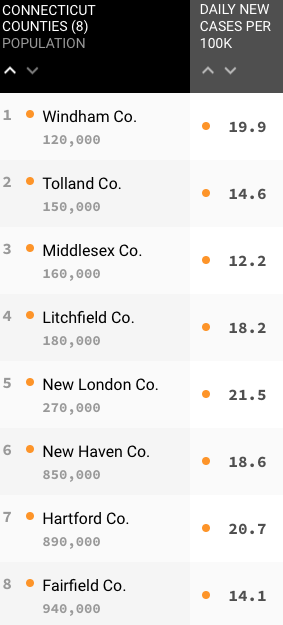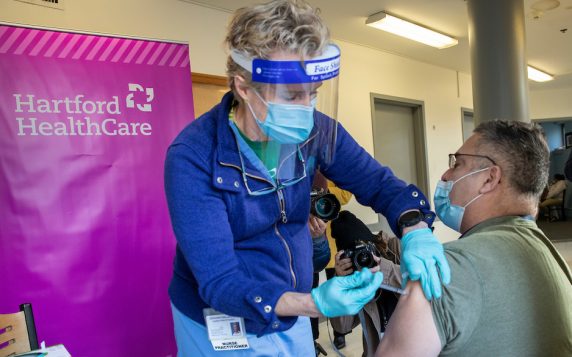COVID-19 infections in Connecticut in the coming months will reach the highest levels since January, according to projections by the Institute for Health Metrics and Evaluation at the University of Washington.
Here are the number of daily cases per 100,000 people the IHME, an independent global health research center, estimates for the next three months:
- Oct. 1: 71.33.
- Nov. 1: 81.93.
- Dec. 1: 91.18.
Below are the current daily cases per 100,000 people in the state through Sept. 6, according to the U.S. COVID Risk & Vaccine Tracker by COVID Act Now.

Dr. Ulysses Wu, Hartford HealthCare’s System Director of Infection Disease and Chief Epidemiologist, attributes a fall potential spike to both Delta and human behavior.
“There is COVID fatigue that is going on,” he says. “All the vaccines are a beautiful thing and they are our way out of this pandemic. When people started getting vaccinations, the most important thing that needed to happen to stop cases was exhibiting the right social behaviors toward transmission. Once we started getting vaccines, we kind of started partying maybe a little too much.”
The IHME also projected a “worse” scenario that would spike infection levels more than 2.5 times higher than at any point in the pandemic before dropping by December.
Here are those daily case projections per 100,000 people:
- Oct. 1: 196.38.
- Nov. 1: 270.27.
- Dec. 1: 152.06.
The infection rate in Florida now is five times higher than in Connecticut, but the IHME projects Florida’s rate will drop below Connecticut’s by the end of the month. By the end of November, Connecticut’s infection (91.8) is projected to be more than four times higher than Florida’s (20.49). Yet Connecticut likely won’t come close to Florida’s highest infection levels.
“The Southern states’ vaccination rates are not good,” says Dr. Wu. “And it is hot down there. So everybody’s inside in the air conditioning. What’s going to help us? We’re going to have a beautiful fall. People will be outdoors camping, sitting by the fires. But around the middle of October, where it starts to get really cold and starts forcing people indoors — that’s when we may start to see cases rise. And that’s why vaccinations are even more important.”



